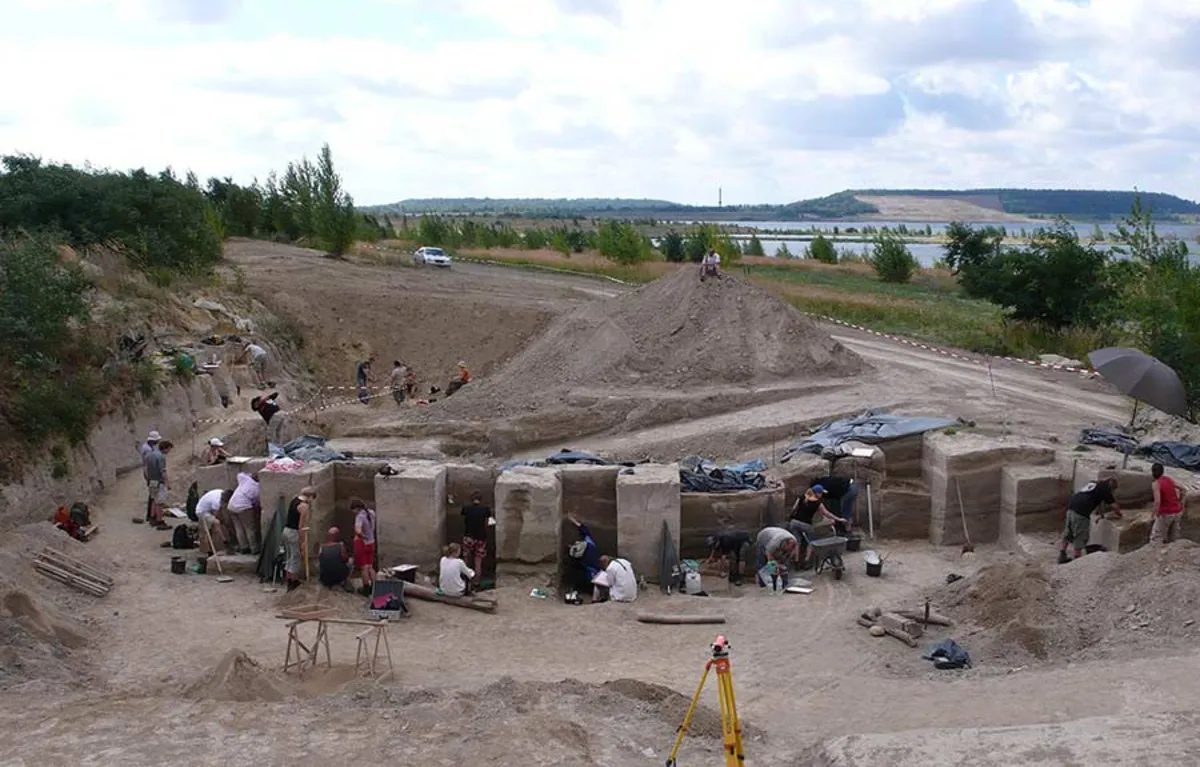
Recent research reveals that Stone Age humans residing near a lake in what is now Germany operated a sophisticated system for processing animal carcasses, effectively running what scientists are calling a “fat factory.” This groundbreaking discovery, reported in the journal Science Advances, is based on the analysis of approximately 120,000 bone fragments and 16,000 flint tools unearthed at the Neumark-Nord site, located south of Halle.
Excavators uncovered these artifacts alongside clear indications of fire use, leading researchers to conclude that Neanderthals—an extinct human species known to have inhabited the area as far back as 125,000 years ago—engaged in systematic practices to extract fat from marrow-rich bones. The process involved smashing the bones with stone hammers and boiling them for several hours. As the fat rises to the surface during cooling, it can be skimmed off, indicating a high level of planning and organization.
“This finding challenges the long-held notion that Neanderthals were unintelligent,” stated Wil Roebroeks, a co-author of the study and professor of Paleolithic archaeology at Leiden University in the Netherlands. The discovery adds to a growing body of evidence demonstrating that Neanderthals were more complex and capable than previously thought.
The research further suggests that Neanderthals at the German site had a clear understanding of the nutritional value of the fat they produced. In a hunter-gatherer lifestyle, fats are crucial, especially for those relying heavily on animal proteins. The study highlights that a diet lacking in fats could lead to a serious condition known as protein poisoning, which occurs when the liver struggles to process excess nitrogen from high protein intake.
To avoid such malnutrition, Neanderthals, who typically weighed between 50 and 80 kilograms (approximately 110 to 175 pounds), needed to limit their protein consumption while supplementing their diet with alternative energy sources such as fats or carbohydrates. The bone remains at the site predominantly came from 172 large animals, including horses, deer, and the now-extinct aurochs, indicating a well-planned hunting strategy.
The exact methods used by Neanderthals to process these bones remain somewhat unclear. However, it is believed they may have created containers from materials like birch bark or animal skins, using them to boil the bones over a fire. This would have allowed them to consume the rendered fat, potentially enhanced with local plants for additional flavor and nutrition. Charred remains of hazelnuts, acorns, and sloe plums were found at the site, suggesting a varied diet.
“These ancient humans were not mere survivors; they were master planners with the ability to organize complex tasks and maximize every resource available in their environment,” remarked Geoff Smith, a senior researcher in zooarchaeology at the University of Reading.
The findings from the Neumark-Nord site provide important archaeological evidence of Neanderthals’ sophisticated strategies for extracting and processing bone grease. Ludovic Slimak, an archaeologist not involved in the study, emphasized the significance of this research, stating it confirms suspicions that Neanderthals valued within-bone lipids and developed techniques to utilize them effectively.
Bruce Hardy, a professor of anthropology at Kenyon College, described the combination of evidence at Neumark-Nord as impressive, stating it may represent a pivotal moment in understanding Neanderthal behavior and capabilities. The research underscores the notion that Neanderthals were highly skilled big-game hunters with a refined sense of ecological adaptation.
In conclusion, the Neumark-Nord site stands as a testament to the ingenuity and adaptability of Neanderthals, illustrating their complex relationship with their environment and their advanced survival skills during the Stone Age.